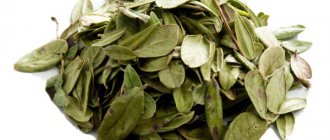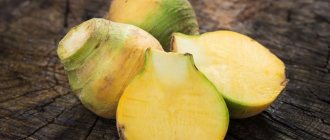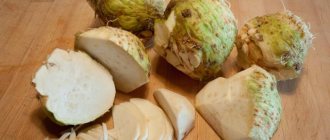How is black rice different from white rice?
Black or wild rice has no relation to white rice grains. These are grains of the aquatic plant Zizania aquatica, which grows in natural conditions up to 3 m in height.
Other differences:
| White rice | Black rice |
| Round and oblong | Only oblong |
| The grains are soft | The grains are hard and require soaking |
| Lots of sodium | Source of Thiamine |
| Taste is normal | Nutty aroma and sweetness |
Important! From black rice you can make healthy and tasty milk, the value of which is almost identical to the drink made from almonds.
Rice can be of different colors, as they differ in nutrient content per 100 g of product:
| Color | Protein | Iron | Cellulose |
| White | 6.8 g | 1.2 g | 0.6 g |
| Brown | 7.9 g | 2,2 | 2,8 |
| Red | 7.0 g | 5,5 | 2,0 |
| Black | 8,5 | 3,5 | 4,9 |
The table shows that black rice has the richest health benefits. In addition, it contains the most antioxidants. It is not for nothing that in ancient China wild rice was called “the grain of longevity and youth.”
Chemical composition of rice
The most common is white rice. It includes:
- micro- and macroelements;
- polyunsaturated and saturated fatty acids;
- alimentary fiber;
- mono- and disaccharides;
- vitamins.
Content of substances in rice
| Element | Content per 100 g, mg | Share of daily value in 100 g, % |
| Potassium | 314 | 1,8 |
| Manganese | 1,1 | 47,8 |
| Phosphorus | 108 | 15,4 |
| Zinc | 1,2 | 10,5 |
| Magnesium | 35 | 8,8 |
| Copper | 0,1 | 12,2 |
| Iron | 0,8 | 8 |
| Sodium | 7 | 0,7 |
| Selenium | 0,015 | 28 |
| Chromium | 0,002 | 3,4 |
| Fluorine | 0,05 | 1,3 |
| Molybdenum | 0,003 | 4,9 |
| Cobalt | 0,001 | 10 |
| Iodine | 0,015 | 0,9 |
| Chlorine | 25 | 1,1 |
| Silicon | 100 | 333 |
Rice grains are a source of not only minerals, but also vitamins:
- group B;
- RR;
- E;
- N.
Most foods contain only a few vitamins and minerals in limited quantities. Therefore, it is important to formulate a diet so that the body receives food of different composition. Before including rice on the menu, BJU should be calculated. It saturates the body with carbohydrates; there are few proteins and fats in its composition.
The special chemical composition of both white and brown rice grains has a beneficial effect on the functioning of the cardiovascular, immune, and nervous systems. Under their influence, the functioning of the digestive organs is normalized, excess fluid and toxins are removed from the body. This helps cleanse the kidneys and liver, improves the water-salt balance in the body.
Due to its high starch content, rice cereal is considered a good source of energy.
But the amount of this substance in the composition is directly related to the type of grain. Long-grained varieties have minimal starch content. When cooked, the grains do not stick together, the porridge or pilaf remains crumbly. Medium and fine grain varieties have more starch, which is why they produce sticky rice porridge.
We recommend that you read: The difference between white and red beans
Rice contains dietary fiber, which has a positive effect on digestion. In 100 g of dry grains they are contained in the amount of 2.9 g. This is enough to cover 14.5% of the daily requirement.
Chemical composition of black rice
The chemical component of wild rice is so multifaceted that it is almost impossible to list all the useful components. Black rice consists of:
- Vitamins B, A, E, K, H, PP, C and folic acid.
- In terms of the presence of antioxidants, it is no different from blueberries, natural red wine, red grapes, strawberries, and red cabbage.
- More than 40 macro- and microelements, such as iodine, copper, fluorine and others.
- More than 18 amino acids.
- Lecithin, protein, biologically active substances and fiber.
- Proteins, fats, carbohydrates and glucose.
Even this short list allows you to understand the benefits and value of black rice for the human body.
Benefits of black rice for the body
Before you start eating black rice, you need to study the health benefits and harms of the grain. First, about the beneficial properties. This cereal promotes:
- increasing immunity,
- normalization of the digestive system,
- liberating the body from toxic substances and toxins,
- preservation of youth,
- normalization of the cardiovascular and nervous systems,
- lowering cholesterol levels,
- reducing the risk of developing cancer and diabetes,
- improving the condition of the body after various types of operations and physical activity,
- restoration of hair and nail structure, skin rejuvenation.
Helps to recover after illness or childbirth
Due to its antimicrobial and anti-inflammatory properties, doctors recommend black rice to patients after serious illnesses and to mothers in labor in the first months after the baby is born. This product is not harmful to newborns.
Protects the heart and blood vessels
Wild rice contains anthocyanin or glycoside in large quantities. This is why the grains are black. The microelement has a beneficial effect on the heart muscle and blood vessels, relieves inflammation. People who regularly consume wild rice have improved brain function.
Removes harmful substances from the body
It is also useful that black rice contains more antioxidants than other varieties of this crop. Together with fiber, they bind toxic substances in the body. This product is especially important for eliminating alcohol poisoning.
Improves the functioning of the gastrointestinal tract
People who have serious problems with the digestive system are recommended to eat black rice. You can forget about constipation, bloating and other gastrointestinal problems thanks to its beneficial properties. In addition, due to the presence of a large amount of fiber, satiety lasts longer, although the portion of black rice may be small.
Prevents the development of diabetes
Dietary fiber contained in black cereals is useful in that it can relieve inflammatory processes in the human body. And the carbohydrates that make up grains are absorbed slowly. These two components of wild rice can prevent the development of not only diabetes, but also other diseases:
- oncology,
- diseases of the heart and blood vessels,
- obesity.
Gluten Free
Almost all cereals contain gluten. It is part of the protein. For many people, this sticky substance is harmful because it causes allergies.
Black grains do not contain gluten. It contains other proteins - glutamine and asparagine.
Important! Black rice is a hypoallergenic product.
Protects the liver
The liver is known to be a hematopoietic organ. Almost the entire human body depends on its health. Dishes made from black cereal cleanse and strengthen blood vessels, reduce cholesterol. Detoxification cleanses the liver of toxic substances.
Contains antioxidants
The black cereal shell contains a large amount of antioxidants or glycoside. This substance has beneficial properties because it normalizes the cardiovascular system, prevents the development of oncology, and promotes the normal functioning of the brain.
Warning! It is not recommended to buy black rice without the shell, since it contains all the beneficial substances: antioxidants, vitamins, minerals and fiber.
Summarize
- Although black rice is not as common as other types of rice, it has the greatest antioxidant activity and contains more protein than brown rice.
- Thus, consuming it may provide benefits to your health, including improved eye and heart health, protection against certain forms of cancer, and weight loss.
- Black rice is more than just a nutrient-rich grain. When cooked, its deep purple color can transform even the most ordinary food into a visually stunning dish.
- If you want to try black rice and can't find it in the store, you can buy it online.
Tags: rice
- Related Posts
- Parboiled rice: health benefits and harms
- Basmati rice: beneficial properties and contraindications
- Can you eat raw oats? Benefits and harms
« Previous entry
Use of black rice in folk medicine
The wild product is called “live” in folk medicine and is widely used for various medicinal purposes. In Japan, since ancient times, members of the royal family ate 1-2 tbsp daily. spoons of sprouts or flour of this useful product to eliminate problems with the digestive system, as well as for rejuvenation.
And now about how to properly germinate cereal without harm to the body:
- Rinse the grains, changing the water several times.
- Soak the cereal in warm water, select the floated specimens.
- Cover the black rice with gauze and leave for 10 hours.
- Rinse the cereal again and add water.
- After 2-3 days, the rice will begin to sprout; grains with white sprouts can be eaten.
Attention! Sprouted grains are stored for no more than 2 days in the refrigerator.
Before use, rice is ground in a meat grinder or coffee grinder. The crushed mass is mixed with yogurt, kefir, cottage cheese or tea. You can add rice to baked goods.
How is black rice used in cosmetology?
It's not just nutritionists who are eyeing wild rice. It is also used by cosmetologists to improve the condition of skin, hair, and nails. The anti-aging properties of cereals were first noticed in ancient times. Japanese geishas still use black rice powder today to protect their skin from the harmful effects of makeup.
Black rice face masks
Healing face masks are prepared from black rice grains because this product:
- rejuvenates,
- whitens,
- protects from the sun,
- mattifies and exfoliates.
It should be noted that wild rice masks are harmless for all skin types. It is enough to apply them twice a week and keep them on the face for a third of an hour.
Mask recipe for tired skin
A tired woman can be identified by her facial skin. It becomes faded and flabby. So, it's time to use a nourishing mask.
Ingredients:
- rice flour – 2 tbsp. l.,
- apple and orange,
- low-fat yogurt.
Features of preparation and use:
- Puree the apple and orange.
- Add flour and stir until smooth.
- Pour in yogurt.
- Place in the refrigerator for half an hour to swell.
- Cleanse your face and apply a mask.
- Rinse off with warm water after 20 minutes, cool the skin with an ice cube.
Black rice for beautiful hair
Rice masks are useful for strengthening hair, restoring its structure and fat content, and removing dandruff.
Attention! Regular use of exotic rice for hair will prevent the appearance of early gray hair without harm.
Wild rice can be used to:
- shampoo,
- hair styling product,
- nourishing mask,
- rinse aid
Recipe No. 1
Compound:
- 2 slices of black unleavened bread,
- 1 tsp. honey,
- water – 2 tbsp.,
- 0.5 tbsp. wild rice infusion.
How to cook:
- The bread is poured with warm water.
- In another bowl, combine the infusion and honey.
- When the bread softens, squeeze it out and combine it with a mixture of rice and honey and mix.
Apply the mask to the hair, massage the head for 2 minutes and rinse with warm water.
Recipe No. 2
This is an excellent mask for hair that is subject to frequent coloring.
Required:
- 2 tsp. rice infusion,
- 1 tsp. castor oil,
- 1 tsp. burdock oil.
The ingredients are mixed and rubbed into the scalp every day. There is no need to rinse off, as the mask does not cause harm.
Recipe No. 3
For dandruff, a mask that contains:
- 1 tbsp. l. decoction of oak bark,
- 2 tbsp. l. black rice broth,
- 1 tsp. honey
Combine all products until smooth and rub into scalp. After an hour, rinse with warm water.
Using black rice for hair accelerates hair growth and gives a healthy shine.
How to cook black rice
To cook wild cereals, use cast iron, Teflon dishes or a stainless steel pan. But it is not recommended to take an enamel container, as it stains and is almost impossible to wash.
It is recommended to soak the cereal overnight before cooking. In the morning, pour clean water over the grains in a ratio of 1:3 and cook for about an hour.
Ready rice increases in volume by 3 times. Leave the container on the stove for 15 minutes. The contents must not be mixed.
What does black rice go with?
The healthy cereal can be used with various products:
- with vegetables and fruits that do not contain starch,
- with meat, fish products,
- Rice cereal goes well with sesame seeds, nuts and legumes.
Black rice can be used to make soup, various snacks and light salads.
Rice Density
If you don’t have scales at home, you can calculate how much rice cereal you need to take using data on the density of the product. This value is calculated as the ratio of body weight to the volume it occupies.
We recommend that you read St. John's wort for colds
Density of rice grains at a temperature of 0°C and an atmospheric pressure of 760 mmHg. is 750 kg/m³. This value is calculated for husked rice grains. Cereal has a lower density, it is 690 kg/m³. For unrefined grains - 680 kg/m³.
Taking into account the density, it was calculated that one 200 g glass can hold 150 g of rice, and a liter jar - 750 g. Knowing the volume of other containers, you can find out how many grams of rice they will contain. A 0.5 liter jar will hold 375 g of rice grains, and a 3 liter bottle will hold 2.25 kg.
Harm of black rice and contraindications for consumption
Despite the beneficial properties of black rice, it is worth checking its effect on yourself to see if it will cause a negative reaction associated with individual tolerance to the product. Moreover, excessive consumption of cereals can cause harm to the body.
Advice! Rice should be eaten in small portions, as indicated in the recipe.
Doctors do not recommend consuming exotic products:
- For chronic intestinal diseases, especially during exacerbation.
- For kidney and bladder diseases, since wild rice has a great diuretic property.
How to select and store black rice
Since the cost of exotic rice for a small package varies between 300 rubles, there are many businessmen who decide to raise big money. They mix brown and red rice with wild grains. That is why you need to purchase the product in special stores.
Selection rules:
- True wild rice has an anthracite color and a shiny surface.
- It’s easy to check whether the product is real or fake: you need to put the grains in water acidified with vinegar. If the liquid turns pink, it means the cereal is natural.
- If the black layer comes off when scratched, it is a fake.
- The cereal package must not be damaged.
- Black rice has a shelf life of only 2 years from the date of harvest, so the date on the package is also important.
You need to store cereal in a glass jar with a tight lid, as it oxidizes in the open air. There should be no products with a strong smell near exotic rice.
How to cook black rice
Cooking black rice is similar to cooking other types of rice.
To prepare it, simply combine rice and water or broth in a saucepan over medium heat. Once boiling, cover with a lid and reduce heat. Cook the rice for 30 to 35 minutes or until it is tender, chewy and all the liquid has been absorbed.
Remove the pan from the heat and let the rice sit for 5 minutes before removing the lid. Use a fork to fluff the rice before serving.
Unless otherwise indicated on the package, use 2 ¼ cups (295 ml) of water or broth for every 180 grams of uncooked black rice.
To prevent rice from becoming glutinous during cooking, it is recommended to rinse it under cold water before cooking to remove excess starch from the surface.
Once the rice is ready, you can use it in any dish, just like brown rice.
Summary:
Black rice is cooked in the same way as other types of rice and can be added to a variety of savory and sweet dishes.
Reviews
Valentina Gennadievna Mezentseva, 36 years old, Vladivostok Wild rice is my weakness. I make a delicious salad from it. I mix the boiled cereal with sautéed onions, pine nuts and porcini mushrooms. For light frying of onions, I use only olive oil. It turns out tasty and low in calories. Why not a vegetarian lunch! Just remember that you can eat no more than 100 g of boiled rice per day, so as not to cause harm. Alexandra Vladimirovna Subbotina, 25 years old, Samara region I eat wild grains only on women’s days: Wednesday, Friday, Saturday. I boil a glass of black rice without salt or seasoning. I divide it into 7 servings, which I eat during the day in this order: 9, 11, 13, 15, 17, 19, 21 hours - porridge, 10, 12, 14, 16, 18, 20, 23 hours - glass water. Eating rice this way allows me to lose up to 2 kg of excess weight per week if necessary. Is it bad? I also like to eat 1 tablespoon of sprouted rice grains on an empty stomach on other days. Svetlana Igorevna Titova, 34 years old, Moscow region Weight problems have always worried me. If necessary, I instantly lose extra pounds, and they come back just as quickly. Once I met a friend, I was struck by her appearance. She looked younger, slimmer, and her facial skin was radiant and firm. It turned out that she uses black rice. I took several recipes from her, I hope it will help me too. Did you find this article useful? Not really
Rice: BJU
When creating a menu, it is important to monitor the ratio of the amount of proteins, fats and carbohydrates that enter the body. Based on established standards, they formulate a diet. When creating a menu, many people are interested in whether rice is a carbohydrate or a protein.
This information is necessary to understand which products it can be combined with. It goes best with protein foods.
When eating rice, you should take into account that the calorie content of this product is high. But this is not its only drawback. Due to the ability of rice to absorb water in the body, digestion processes slow down. This leads to the absorption of nutrients in full.
The ratio of BJU in different varieties of rice varies slightly.
Protein content
White rice contains 6.7 g of protein per 100 grams of grains. With a standard caloric intake of 2000 kcal and compliance with USDA dietary recommendations, the body should receive about 90 g of this energy source daily. Every 100 g of rice grains provides 7.4% of the daily protein requirement.
Brown rice has slightly less than 6.3 g of protein.
The maximum amount of these substances is concentrated in the embryos and outer layers of the grain. There are few of them in the starchy part. The main protein component of grains is glutelin (orysenin). Its amount in different varieties varies from 68 to 82%. The content of alcohol-soluble proteins (prolamines) is insignificant. In the peripheral parts of the grains there are mainly albumins and globulins, and in the rest - oryzenins.
The amino acid composition is directly related to the varietal characteristics and conditions in which the grain crop was grown.
Rice proteins contain all the essential amino acids, but the amounts vary. For example, lysine content varies from 1.8 to 4.8%. Studies have shown that the composition contains glutamic, aspartic acids, methionine, and tryptophan. But the protein content in rice is low, so it is recommended to combine it with animal products. This combination increases the nutritional value of protein components.
We recommend that you read Turmeric in the treatment of the stomach and intestines
Fat content
Rice is a low-fat food. In 100 g of white polished grains there are 0.7 g, brown grains with bran shell - 3.2 g. This amount covers from 1.5% to 7% of the daily fat intake with a standard caloric intake of 2000 kcal. But when calculating the ratio of BJU, the fats found in rice cereals should be taken into account.
Carbohydrate content
White rice is considered a high carbohydrate food. 100 g of grains contain 79 g of carbohydrates. This is almost 30% of the daily requirement. Therefore, people trying to lose weight should limit their consumption of rice. But you don’t have to give it up completely; you just need to supplement your diet with vegetables and protein foods.
Brown rice has a lower carbohydrate content, ranging from 65-72 g, depending on the type and growing conditions. But due to the large amount of dietary fiber, they are absorbed slowly.
Carbohydrates in rice include fiber, starch and sugars. White varieties contain quickly digestible carbohydrates. The starch contained in cereals is broken down into glucose when it enters the body.
The boiled product also contains its breakdown products - maltodextrins and dextrins. Due to their rapid solubility, they are absorbed faster than starch. The body processes carbohydrates from brown rice varieties more slowly. This is due to the increased fiber content in their composition.











